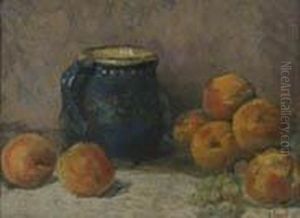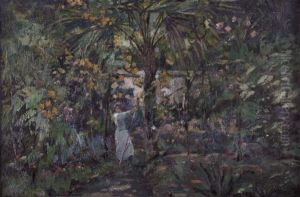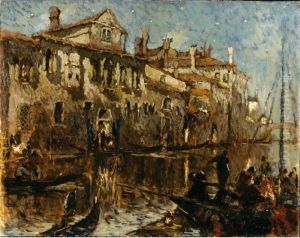Enrico Cavalli Paintings
Enrico Cavalli was an Italian painter, born in 1856 in Varese, Lombardy, during a period of rich cultural and artistic development in Italy. Cavalli is most notably recognized for his contributions to the Divisionist movement, a precursor to modern Italian painting techniques that emphasized the separation of colors into individual dots or strokes, which visually mix together from a distance to create luminous landscapes and scenes. His work, deeply influenced by the Divisionist methodology, showcases a unique blend of light and color, capturing the transient effects of light on nature and landscapes with a delicate precision.
Cavalli studied at the Brera Academy in Milan, where he was exposed to the latest artistic trends and techniques. The Divisionist movement, which sought to break away from the traditional methods of painting, greatly influenced his style. The Divisionists were inspired by scientific theories of vision and color, and they aimed to achieve a greater vibrancy of color in their works by applying paint in separate strokes of pure color. This technique was also closely related to the Pointillism developed by Georges Seurat, although Italian Divisionists like Cavalli often pursued broader social and political themes in their works.
Throughout his career, Enrico Cavalli participated in various exhibitions and was associated with other prominent Italian artists of the time. His landscapes and scenes of everyday life are celebrated for their vibrant colors and dynamic light effects, which evoke a sense of harmony and emotion. Cavalli's paintings are considered a vital part of the Divisionist movement's contribution to the evolution of modern art in Italy. Despite the significance of his work, Cavalli, like many artists of his era, faced periods of obscurity.
Enrico Cavalli died in 1919, leaving behind a legacy that has since been re-evaluated and appreciated by art historians and collectors alike. His paintings can be found in several Italian museums and collections, recognized for their technical innovation and beauty. Cavalli's contribution to the Divisionist movement and Italian art history remains a testament to his skill in capturing the ephemeral nature of light and color, marking him as a significant figure in the transition towards modern artistic expressions.


